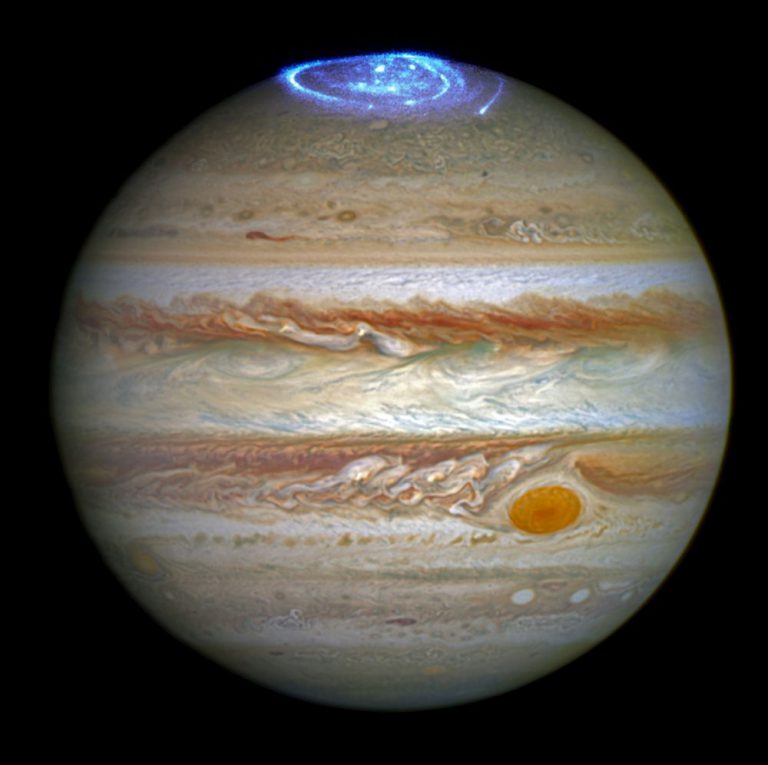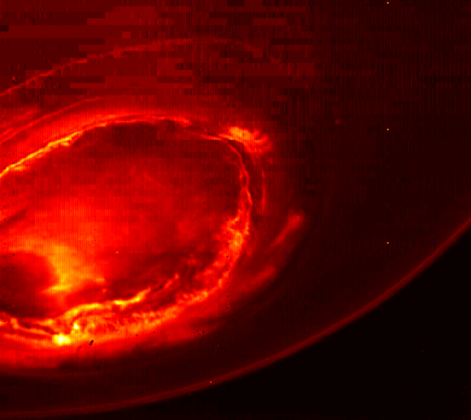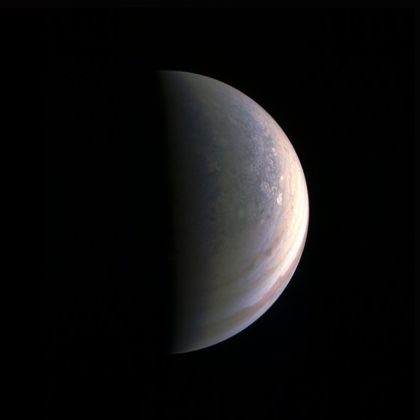Juno is NASA’s spacecraft that is dedicated to exploring the realms of the fifth planet from the Sun, Jupiter. Although the first observations of this planet were made more than forty years ago, not much has been discovered, until now. During Juno’s first of 37 planned orbits it successfully took infrared close-ups of Jupiter and its north and south poles, revealing extensive auroral activity in both.
The six-hour journey between Jupiter’s north and south poles took Juno around six hours to complete while the footage that was captured took 1.5 days to download on Earth. Scott Bolton, Juno’s Principal Investigator, states, “ the First glimpse of Jupiter’s north pole and it looks like nothing we have seen or imagined before. It’s bluer in color up there than other parts of the planet, and there are a lot of storms. There is no sign of the latitudinal bands or zone and belts that we are used to – this image is hardly recognizable as Jupiter. We’re seeing signs that the clouds have shadows, possibly indicating that the clouds are at a higher altitude than other features.”
December 1974 was the last time that exploration was done into Jupiter close-up and that consisted of a simple fly-by mission that only managed to capture a limited number of images. Juno’s first mission alone is expected to run until 2018. After which, there are another 36 orbits to Jupiter planned. Juno’s images reveal hot and cold spots on the planet that have never been seen before and the infrared views of Jupiter’s south pole revealed its southern aurora which no other instrument until now has been able to see.
As well as capturing footage of the planet, Juno has also captured the radio emissions that are emitted from it using an instrument called the Radio/Plasma Wave Experiment (Waves). “Jupiter is talking to us in a way only gas-giant worlds can. Waves detected the signature emissions of the energetic particles that generate the massive auroras which encircle Jupiter’s north pole. These emissions are the strongest in the solar system. Now we are going to try to figure out where the electrons come from that are generating them”, states Bill Kurth, co-investigator for the Waves project.
More News To Read













